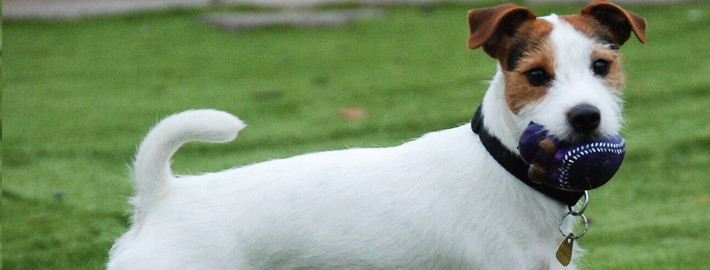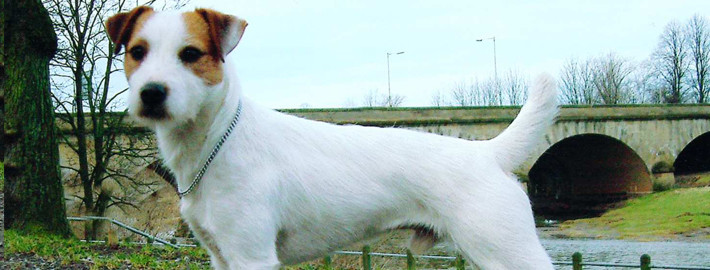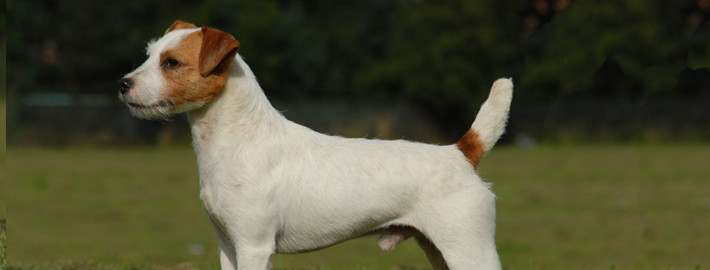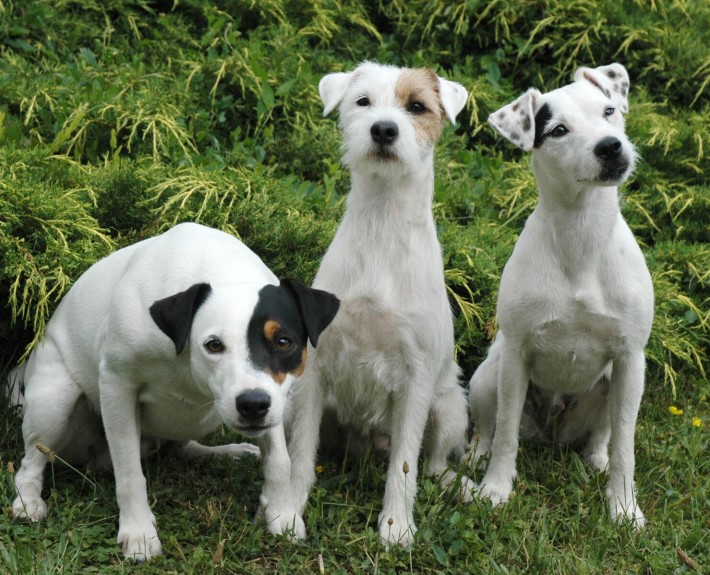What makes the Parson Russell Terrier Unique?
Originally bred for foxhunting, this small English terrier is a bundle of energy. When matched with the right owner, Parson Russell Terriers make great pets but these small dogs chiefly remain a working breed rather than companions.
Breed Groups
Page Contents
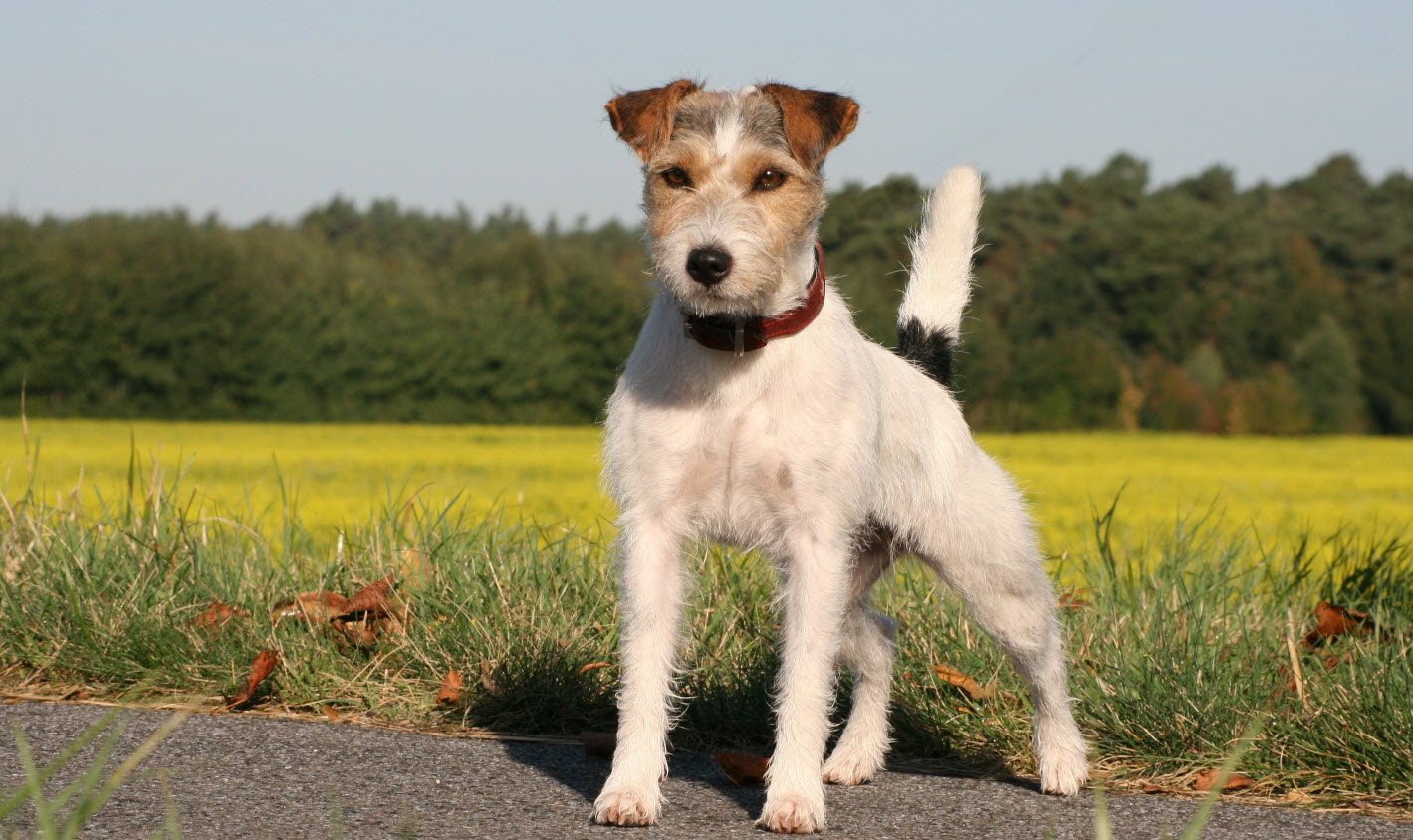
Is the Parson Russell Terrier Right For You?
Parson Russell Terriers are very energetic little animals. They are best suited as pets for individuals who don’t mind exercise and can tolerate a bit of mischief in their life. After all, these adventurous dogs have a profound knack for trouble. They enjoy digging and barking at things. Members of this breed remain excellent hunters that have been known to chase cats, rodents, and other small animals. They may also start scuffles with unfamiliar canines as well.
These friendly dogs are well behaved around both people and horses.
Owners have to be strong willed in order to avoid being bossed around by these dogs. It goes without saying that members of this breed will greatly benefit from obedience training and extensive socialization at a young age. These dogs should be taught in a straightforward, consistent manner with the expectation that they need to listen to the commands that are given to them. When properly trained, Parson Russell Terriers are reasonably obedient pets.
In 5 Words
- Bold
- Energetic
- Eager
- Obedient
- Happy
Characteristics
Learn About the Parson Russell Terrier
Description
General Description
Parson Russell Terriers were created as hunting dogs and their appearance reflects that fact. Being slender helps these dogs easily squeeze into tight burrows and dens to flush out their prey. Keeping up with both horses and hounds on fox hunts is also no problem for these long legged canines. These dogs use move at a brisk pace on their round, cat-like paws. The tips of their docked tails are carried level with their heads. Members of this breed are also said to have a lively and intelligent expression in their almond-shaped eyes.
Despite being smaller canines, Parson Russell Terriers have a medium-size bone structure. They also possess rectangular muzzles, proportionate heads, and folded ears. Black noses are another feature of this breed. A scissors bite is typical of this breed. They also have narrow but deep chests. A person of average size should be able to wrap their hands around an individual dog’s chest and their fingers meet in order for the dog to fit the breed standards. This practice is called spanning and it is one of the main criteria for judging these dogs.
Size
Both male and female dogs of this breed should weigh between 13 and 17 pounds (6 and 7 kilograms). They should also stand between 12 and 15 inches (30 and 38 centimeters) tall at their shoulder blades.
Coat
All Parson Russell Terriers have coarse double-coats that are completely weatherproof. The dogs come in both wirehaired and smooth varieties. While the outer layers vary in appearance, all members of this breed have inner coats which are short in length and thick in texture. These dogs are predominantly white but they can have black or tan markings. Tricolor varieties are also available. However, Parson Russell Terriers should not have brindle colorations because that is considered to be a disqualifying fault at dogs shows.
Short History of the Parson Russell Terriers
Reverend John Russell created this particular breed of terrier in the early 1800s, starting with a female dog called Trump. This Fox Terrier variety garnered attention as a breed in the half-century that followed. Parson Russell Terriers came to the attention of the Devon and Somerset Badger Club, a group dedicated to furthering the practice of badger digging, around the mid1890s. At that point in history, Arthur Heinemann drew up the first breed standards for these dogs. Eventually the Badger Club became the Parson Jack Russell Terrier Club. This establishment remained in operation until the years leading up to the Second World War.
The Jack Russell Terrier Club of Great Britain was created in the 1970s and almost a decade later Parson Jack Russell Terrier Club was formed. Conflict arose between the two over the possibility that these terriers could obtain official recognition with the United Kennel Club. The earlier group opposed this turn of events while the second favored the idea. Eventually the Parson Jack Russell Terrier Club won their battle and the dogs were accepted to both the United Kennel Club and American Kennel Club during the 1990s.
The breed’s name was eventually changed to Parson Russell Terrier in the late 1990s, but this new moniker took almost a decade to be fully accepted by the various dog breed authorities. As of right now, Parson Russell Terrier and Jack Russell Terriers are considered separated breeds by the New Zealand Kennel Club, the Australian National Kennel Council, the American Kennel Club, and the United Kennel Club. However, the Jack Russell Terrier is without question the more popular of the two breeds.
Temperament
Parson Russell Terriers are very energetic little animals. They are best suited as pets for individuals who don’t mind exercise and can tolerate a bit of mischief in their life. After all, these adventurous dogs have a profound knack for trouble. They enjoy digging and barking at things. Members of this breed remain excellent hunters that have been known to chase cats, rodents, and other small animals. They may also start scuffles with unfamiliar canines as well.
These friendly dogs are well behaved around both people and horses. However, it is best to supervise Parson Russell Terriers around toddlers because they resent being handled roughly by small children. These dogs are nonetheless affectionate and loyal family members.
Caring for Your Parson Russell Terrier
General Health
Born in litters of about 6 pups, Parson Russell Terriers generally live an average of 14 years. As with any breed, there are a number of health problems that can arise in these dogs. Glaucoma, ataxia, Legg-Perthes disease, lens luxation, compulsive behavior, patellar luxation, and deafness have been known to occur in these dogs from time to time. Eye and knee tests are highly recommended for members of this breed so that owners can identify and treat any potential problem before they become serious.
Care
Daily
Parson Russell Terriers need to be taken on a long daily walk. Owners should keep in mind that some individuals of this breed are more active than others and they may need two outings a day instead of just the one. These dogs should not be allowed off their leashes on these excursions because an interesting scent or the prospect of chasing a squirrel may cause them to get away from their human owners.
Weekly
Frequent tooth brushing is beneficial for dogs as it reduce tartar and plaque buildup and also helps prevent foul breath. Members of this breed may also benefit from being groomed several times per week.
Monthly
Heartworm, flea, and tick medication should be administered on a monthly basis to keep pets free of parasites.
Grooming & Bathing
Parson Russell Terriers only need to be bathed when they get dirty. However, those with a wire haired coat will probably need to be hand stripped to keep mats from forming. Smooth coated terriers will only need to be stripped if their owners plan on showing them. Owners should also keep their dog’s toenails trimmed to prevent any injuries from arising.
Exercise & Training
Intelligence and stubbornness are two defining traits of terrier breeds. The Parson Russell Terrier is no exception. Owners have to be strong willed in order to avoid being bossed around by these dogs. It goes without saying that members of this breed will greatly benefit from obedience training and extensive socialization at a young age. These dogs should be taught in a straightforward, consistent manner with the expectation that they need to listen to the commands that are given to them. When properly trained, Parson Russell Terriers are reasonably obedient pets.

